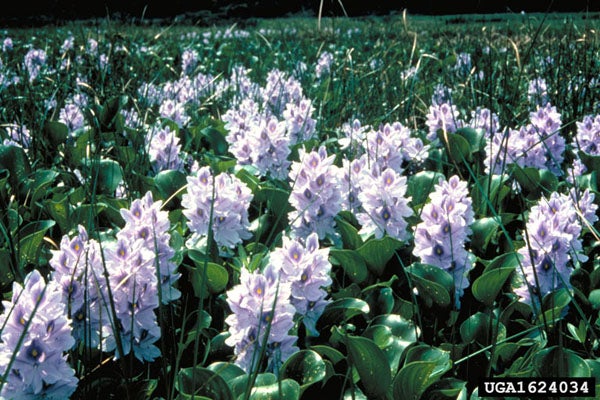Using chemicals in farm ponds
Published 11:20 am Monday, April 4, 2011
Before a chemical is selected for aquatic use the pond owner must ask himself will it achieve the desired result?
This question may seem obvious to many pond owners, but is one that is often overlooked.
In many cases, there is no single aquatic herbicide capable of controlling the many types of weeds that can become pond management problems. Most chemicals used to control weeds, diseases and other aquatic pests are expensive and are effective only on certain pest organisms.
Currently, there are about 12 herbicides that are labeled for aquatic weed control. These chemicals control aquatic weeds effectively but are more effective on some classes of weeds than others. When selecting one of these chemicals it is important to correctly identify the weed and match it with the proper herbicide.
Aquatic plants that cause problems are generally divided into four groups: Algae, floating, submergent and emergent weeds. Algae are small, usually microscopic plants that lack leaves, roots and stems. These plants may be made up of only one cell, or a combination of cells called filaments.
Algae may grow freely suspended in the water (plankton), floating at the water surface as pond scum or be attached to the bottom of the pond. Free-floating weeds such as duckweed and water hyacinth have leaves and stems above the surface and roots that suspend in the water below.
Floating weeds are not attached to the bottom. Floating plants come in sizes from very small (duckweed) to over a foot in diameter (water hyacinth). Most have roots that hang in the water from the floating green portions
Submergent weeds are usually rooted on the bottom and often extend to the water surface. Common weeds in this group are southern naiad, coontail and watermilfoil. Growth usually occurs on or near shore and in shallow water areas.
Common emergent weeds are rooted plants often along the shoreline that stand above the surface of the water. The stems of emergent plants are somewhat stiff or firm. Examples of emergent weeds are smartweed, alligatorweed and cattail.
Aquatic herbicides can be applied in several ways. Some herbicides can be applied directly from the container. Handheld or backpack sprayers are used for spraying emergent vegetation around the shoreline. Boat-mounted tank sprayers can be used for either surface spray or subsurface injection. Hand-operated or mechanical spreaders are used for dispensing granular material. Granular material can also be dissolved by towing it in a bag behind a boat.
Whenever you use a chemical in a pond, it must be applied properly and all warnings and precautions concerning its use must be understood and observed. Fortunately, all of this information is on the label for most chemicals approved for use in farm ponds. Anyone who uses a chemical in a pond should always thoroughly read and understand the chemical label before purchasing and applying it.
Remember, to prevent fish kills it is recommended that only a portion of the pond be treated for a weed problems at a time. The possibility of low oxygen becomes more serious as water temperatures rise in late summer. If possible, weed problems should be dealt with when water temperatures are between 70 and 80 degrees Fahrenheit.
A farm pond can serve many purposes such as a source of food, sport fishing, livestock water source, irrigation and water for firefighting. This is why it is important that the pond owner be knowledgeable about chemicals labeled for aquatic use and applies them in the appropriate manor.
Source: Texas A&M Cooperative Extension Aquaplant.


